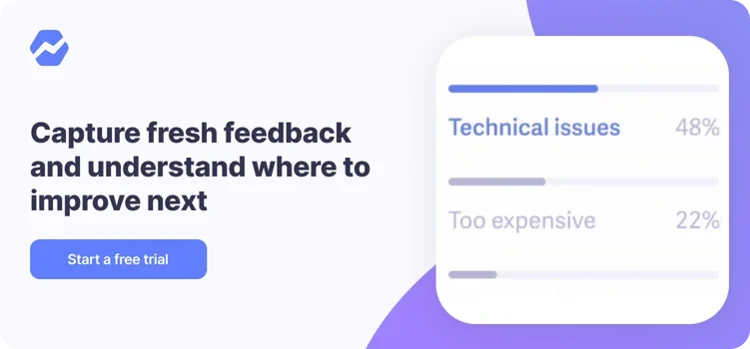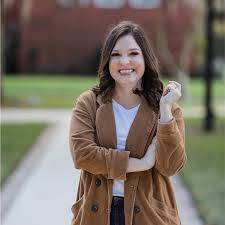Table of Contents

Customer acquisition is understandably a core focus for many startups and SaaS brands. Attracting and converting new customers is essential for long-term growth, but customer retention is critical, too.
Creating a positive customer experience is essential for long-term retention.
While that does include an easy-to-use website and a friendly salesperson at the beginning of a customer’s lifecycle, proactively ensuring that they’ll get the most out of your product after they convert is what's is most impactful for long-term retention.
SaaS brands and startups investing in tracking customer success can improve the product experience for customers, which can increase the value of their product and boost customer retention rates.
Customer Success Tracking Explained
Customer success involves anticipating customer challenges or obstacles and proactively offering solutions to ensure they get the most out of your product.
You may have developed a best-in-class automated outreach platform, for example, but it won’t matter if your customers can’t figure out how to leverage it properly.
Examples of improving customer success may include:
- Creating help desk resources or product knowledge bases
- Developing more intuitive dashboards and user interfaces
- Featuring more in-depth, in-app product tutorials
- Offering personalized onboarding, account setup, and team training for new clients
The Importance of Customer Success Tracking
Customer success tracking is the practice of monitoring and analyzing customer success metrics throughout the customer lifecycle. You can better understand how individual touchpoints are either facilitating or hindering customers from getting the most out of your product or service.
Brands that fail to account for customer success deliver poor customer experiences, which can trigger high churn rates quickly— even if their product was an outstanding fit for the customer’s needs.
Many brands understand the importance of tracking customer satisfaction rates with metrics like customer satisfaction scores and net promoter scores. These KPIs tell you how happy customers are with their total brand experience.
Tracking customer success, however, can identify potential friction points at all stages of the customer experience. It can also help you spot opportunities to optimize what’s already working.
Benefits of Tracking Customer Success
Tracking customer success can offer the following benefits:
- Provide insights into customer behavior, preferences, and usage. You may find that users are consistently under-utilizing a specific feature, for example. Doing some additional research can help you assess whether that’s because they don’t actually need the feature, or because they don’t know it’s there.
- Identification of winning strategies for retention and upselling. Tracking customer success can help you identify what is working for optimization. You can also identify opportunities for upselling higher-cost plans or cross-selling additional products or services based on customer usage.
- Predicting future trends and customer needs. Identifying potential bottlenecks or obstacles now allows you to make improvements for future customers.
Key Features of Baremetrics for Customer Success
Baremetrics is a subscription analytics platform with detailed revenue and customer analytics. Designed for SaaS brands and startups, Baremetrics can provide key insights for customer success tracking, including the following.
Customer Segmentation
Individual customer segments will likely use your product differently.
Baremetrics allows you to view various metrics like revenue, churn rate, and activity levels for unique customer segments. This makes it easier for businesses to learn about specific groups within their target audience and identity potential changes for improvement.
Revenue Insights
Baremetrics offers multiple revenue metrics and KPIs so brands can analyze different revenue streams. By doing so, they can identify key contributors to success.
Customers who purchase through a mobile app store, for example, may not spend as much or may churn faster. Those who purchase directly from the brand’s product website, however, may have spent more time researching and understanding the software. As a result, they’ll retain longer.
Churn Tracking
Churn metrics help you track the rate at which you’re losing customers. While some churn is normal (with an average churn rate for SaaS brands falling at around 5%), you want to ensure you’re retaining high percentages of customers month-over-month. It’s important to acquire and retain more customers than you lose.
Cohort Analysis
Baremetrics’ cohort analysis allows businesses to segment groups of users and analyze behavior like usage patterns and in-app actions.
By organizing users into different customer segments, you can learn more about different groups’ experiences with your product— and what you can do to improve it across the board.
Some SaaS brands, for example, offer dedicated professional onboarding for enterprise clients.
Customer segmentation may help you realize that the enterprise clients find the adoption and implementation process effortless, but self-service customers on lower-cost plans are struggling and churning faster as a result.
Implementing guided walk-throughs in-product alongside a series of onboarding videos could resolve this issue.
Event Tracking
Baremetrics offers event tracking, providing analytics and reporting based on specific types of customer actions.
Trackable events in Baremetrics include:
- New customers
- Upgrades (customers who have upgraded to higher-cost plans)
- Switches (or customers who have changed plans)
- Charges
- Failed charges
- Downgrades
- Refunds
Integrating Baremetrics with Other Tools
Baremetrics is a powerful subscription and revenue analytics platform, and part of that is the ability to integrate Baremetrics with other tools and revenue platforms that you’re already using.
Integrating with multiple data sources can offer multiple benefits.
Learn more about Baremetrics integrations with specific data sources here:
Enhancing Data Insights
Integrating Baremetrics with other data sources, including revenue sources and subscription management tools, provides a thorough look at everything happening with your customers— no matter where they’re converting.
Automation of Reports
Baremetrics offers automated reporting, syncing data from multiple platforms in one dashboard and creating easy-to-understand reports in a single location.
Automated reporting can save a significant amount of time while providing real-time insights that are up-to-date, accurate, and actionable.
Best Practices for Utilizing Baremetrics
You want to improve customer success for your clients, and we want to help you do that with Baremetrics! So, here are a few tips for how you can get the most out of using Baremetrics for customer success.
Regular Monitoring
Customer success requires ongoing analysis and careful monitoring. Check up regularly to track KPIs like the following:
- Churn rate
- Monthly recurring revenue (MRR)
- Annual recurring revenue (ARR)
- Active subscriptions
- Upgrades
- Downgrades
- Refunds
- Lifetime value (LTV)
- User churn
- Churned subscriptions
Actionable Insights
Take advantage of Baremetrics' accurate data reporting and our actionable insights.
Our Cancellation Insights, for example, can also help you identify why customers may be churning, while Trial Insights allows you to track customer activity through trial periods so your sales team can take informed actions and increase conversions.
Our Recover feature prevents churn by flagging issues like expired credit cards that may cause missed payments.
Use these clear insights to identify where you can make customer success improvements, increasing new subscription conversions and decreasing churn as a result.
Custom Alerts
Regular check-ins are always important, but some events and milestones are significant enough you want to know right when they happen.
Baremetrics allows you to set up custom alerts for key events. With our Slack integration, relevant team members will receive a Slack message letting you know what’s happened, with an easy link to access more information in the Baremetrics dashboard.
Case Studies
Baremetrics has been helping customers improve revenue analysis and customer success tracking since we first launched.
For example, UXPin used Baremetrics to sync financial and sales data in a single dashboard, and to aggregate and segment customer data to better support sales activities. They segmented users based on traits like MRR and geographic location, and view the entire customer journey to support sales and create a stronger customer experience.
Cancel Timeshare also used Baremetrics to reach their customer service and success goals, while preventing the loss of $680 in a single month with Recover. They track important financial metrics like MRR and organize customer data. They also use our People Insights to support better customer service and improve customer success.
Many of our clients use Baremetrics as a central platform for tracking financial data, subscription activity, and customer success. Since the three often go hand-in-hand, this is an easy and effective way to gather essential information in one place and make data-driven decisions accordingly.
Conclusion
Baremetrics was designed with SaaS brands and subscription-based startups in mind. We understand how critical it is to have accurate data and easy-to-interpret, actionable insights that improve revenue performance and customer success.
We offer 26 metrics that all subscription businesses need, along with eight crucial insights, and we integrate data from major platforms like Stripe, Recurly, Shopify Partners, and more.
Customer success is an ongoing process, and we’re ready to join you on the journey.




